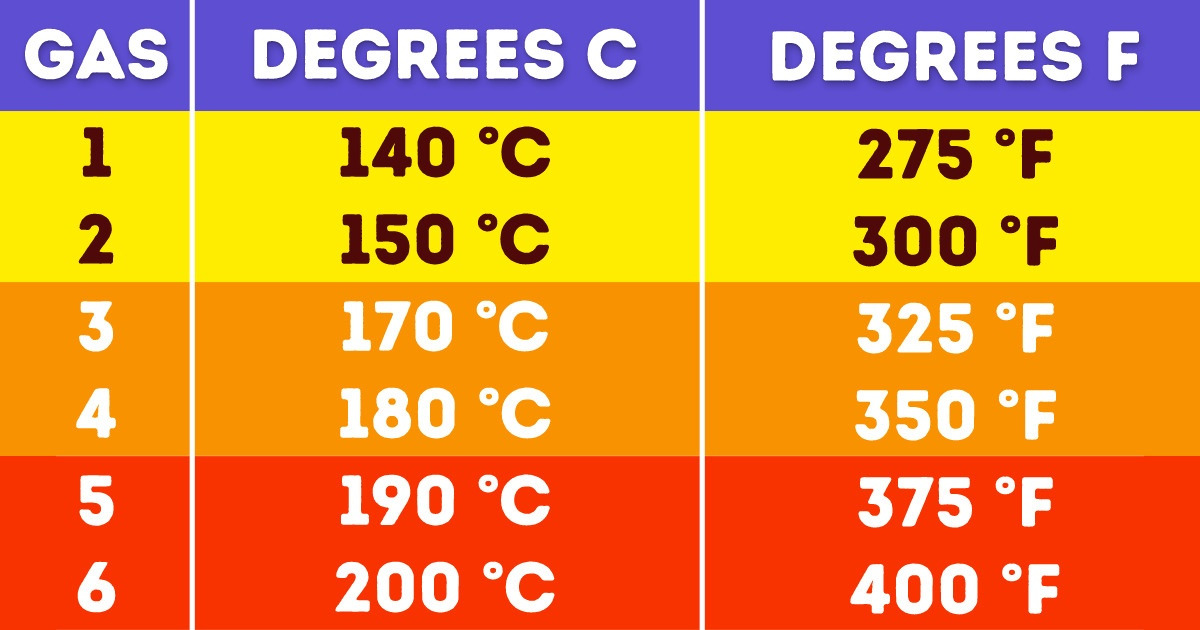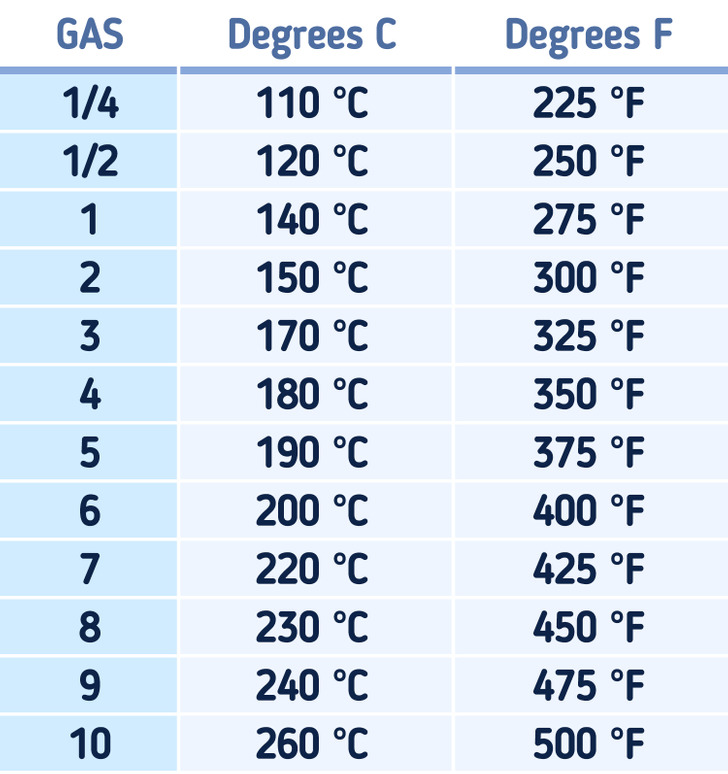How to Convert Celsius Degrees Into Gas Stove Marks or Fahrenheit Degrees

There are situations that require us to read a recipe with temperature recommendations in values we don’t fully understand. This may happen when you’re cooking on a gas stove and the handle with the temperature may not tell you the degrees but, instead, gives numbers from 1 to 6 or to 9. Or maybe the author of the recipe gives you degrees in Fahrenheit, but you don’t want to do the conversion in your head.
5-Minute Crafts has made a simple chart for you to quickly see how to convert Fahrenheit degrees into Celsius degrees, and there are temperatures for different stove marks.
How stove marks can be converted into degrees

This chart will help if you need to cook a certain meal in the oven. If you look closely, you can see approximate conversions of Celsius into Fahrenheit.
To convert degrees exactly, you need to use the following formulas:
- Subtract 32 from Fahrenheit degrees and divide the result by 1.8 and you will have the Celsius degrees.
- If you multiply Celsius degrees by 1.8 and add 32, you will get Fahrenheit degrees.
Important: Many gas stoves start from 1, not from 1/2 or 1/4, which might make it hard to cook if you are making meringue or a different meal that needs to be slowly dried at a lot temperature. And vice versa: some gas stoves have a limit of 6 or 7, which may be a problem for making bread.
What else is important to know before cooking in an oven
- Before cooking a meal, heat up the oven to the necessary temperature (unless the recipe gives you other instructions). The recipe requirements are there due to certain chemical reactions that guarantee the meal will be cooked properly and have a certain taste, smell, and texture. And things might not go as planned if you put the meal into the oven before the temperature in there reaches a necessary mark.
- When baking in “convection” mode, the temperature should be reduced by 15-20 degrees and the time of cooking should be reduced too. This is because the air in the oven in this mode is constantly moving and distributing the heat evenly.
- Use a deep metal tray to make the humidity in the oven higher and create steam. It helps make the crust on pastries and influences how the dough acts. Very often, thanks to the steam in the oven, tasty bread is made. Put the tray inside the oven, let it heat up, and then pour a glass of boiling water into it and close the oven. The water will start to evaporate very quickly.